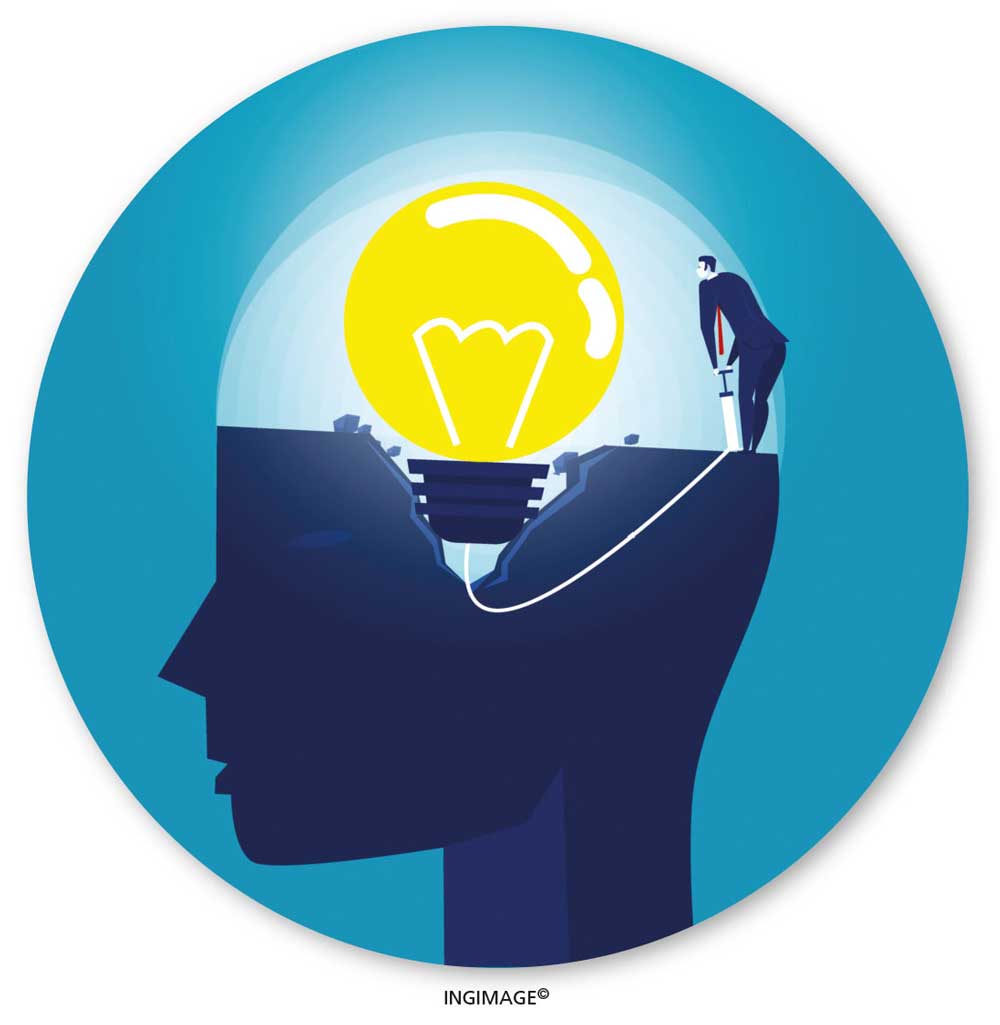PRODUCTIVITY HACKS
OPTIMISING OUTPUT
Boost productivity with downtime
BY Archana Law

Be honest: are you truly busy? In a world where people wear ‘busy’ like a badge of honour, not being so can make one feel awkward, lazy etc. But does ‘busy-ness’ equal being productive – or are you feeling burnt-out, anxious and stressed?
Multitasking is ingrained in our culture and workplaces. An estimated 98 percent of people don’t multitask very well. Most of us shift back and forth from one task to another – such as when typing an email and listening to a conference call conversation afterwards, then back to the email and so on.
The problem with multitasking is that it isn’t very efficient because it takes our brain time to refocus on the activity ahead of us and can reduce productivity by as much as 40 percent. It’s a counterintuitive solution to productivity and may impede it by slowing us down.
In its Smarter Living newsletter, the New York Times extolled the benefits of doing nothing! An article in it recommends taking a cue from the Dutch practice of niksen, and intentionally investing time and energy to engage in activities such as gazing out of the window or sitting still.
Slowing down can also be a great productivity tool, says expert in the field and author of the blog titled A Life of Productivity Chris Bailey. He reminds us that when our energy is depleted, we can’t possibly be as productive because we’ll be out of fuel to burn. Practising niksen can help us recharge our batteries.
On the other hand, being burnt-out is a state of physical or emotional exhaustion that involves a sense of reduced accomplishment and loss of personal identity. If you find yourself being cynical, irritable, impatient, unable to concentrate or sleep, troubled by unexplained aches or stomach complaints and are using food, drugs or alcohol to feel better, it’s time to take action!
Think of basketball: when you’re behind by 20 points, you can’t take a 20-point shot! You have to catch up slowly, one basket at a time, even though the temptation is to try for a miracle shot…
But that’s easier said than done… so here are some tips on how to get started.
SCHEDULE TIME Unless you carve out time and permit yourself to simply ‘be,’ your busy schedule will become even more hectic! Consciously build into your calendar space to think, observe and reflect, and you will find that you’re able to focus better on what matters most.
SLOWER PACE Do you fear that your ‘monkey mind’ will never stop racing? Swap Netflix binge watching for quiet meditation; frenetic kickboxing sessions for yoga; and alternate vigorous running with leisure walks to boost your memory, creativity and problem solving skills.
SIMPLE THINGS Take difficult challenges head-on and mix these up with smaller goals to keep your energy in check.
Professors Kimberly Elsbach and Andrew Hargadon of the University of California, Davis, suggest that “finding ways to balance our workday activities with a mix of ‘mindful’ (cognitively demanding) and ‘mindless’ (cognitively facile) activities” allows us to control our schedules, maintain momentum and make progress on greater things.
SPACE TO LEARN Prof. Robert Duke of The University of Texas at Austin researched the most effective practice techniques for performers. In observing piano majors practising difficult keyboard passages, he learnt that the top players tended to slow down their play at the right moments, helping to avoid making the same mistakes more than once.
When absorbing new information, slow down to give complex information a direct path to your brain.
APPS CAN HELP Rather than using technology to add tasks or fill time, how about deploying it to help schedule and orchestrate minibreaks in your day?
Finding even 10 minutes a day to downshift your mind can help restore focus and energy.
A DAY AT A TIME Author of ‘Deep Work: Rules for Focused Success in a Distracted World’ Cal Newport says that no one can sustain laser focus through long hours. Even though we’re not machines, many of us try to be. It’s as if the number of hours you work in ‘full steam ahead mode’ equates with your value.
Have a cadence to pull things up from the list but don’t try to do them all at once.
CREATE LIMITS Ask your team to create boundaries for meetings – such as laptops closed, no checking mobile phones, everyone participating, each person being asked to voice his or her opinion at the end of a discussion and so on.
Tell the group to test the boundaries for a few weeks and then share any changes they’ve noticed. Hopefully, there will be more interaction, less stress and heaps of fun.
LOSE THE GUILT Stop feeling guilty when you’re slowing down! Taking short breaks and vacations are elements of success rather than detractors.
By unapologetically incorporating periods of stillness, you’ll ensure enhanced productivity and wellbeing.




